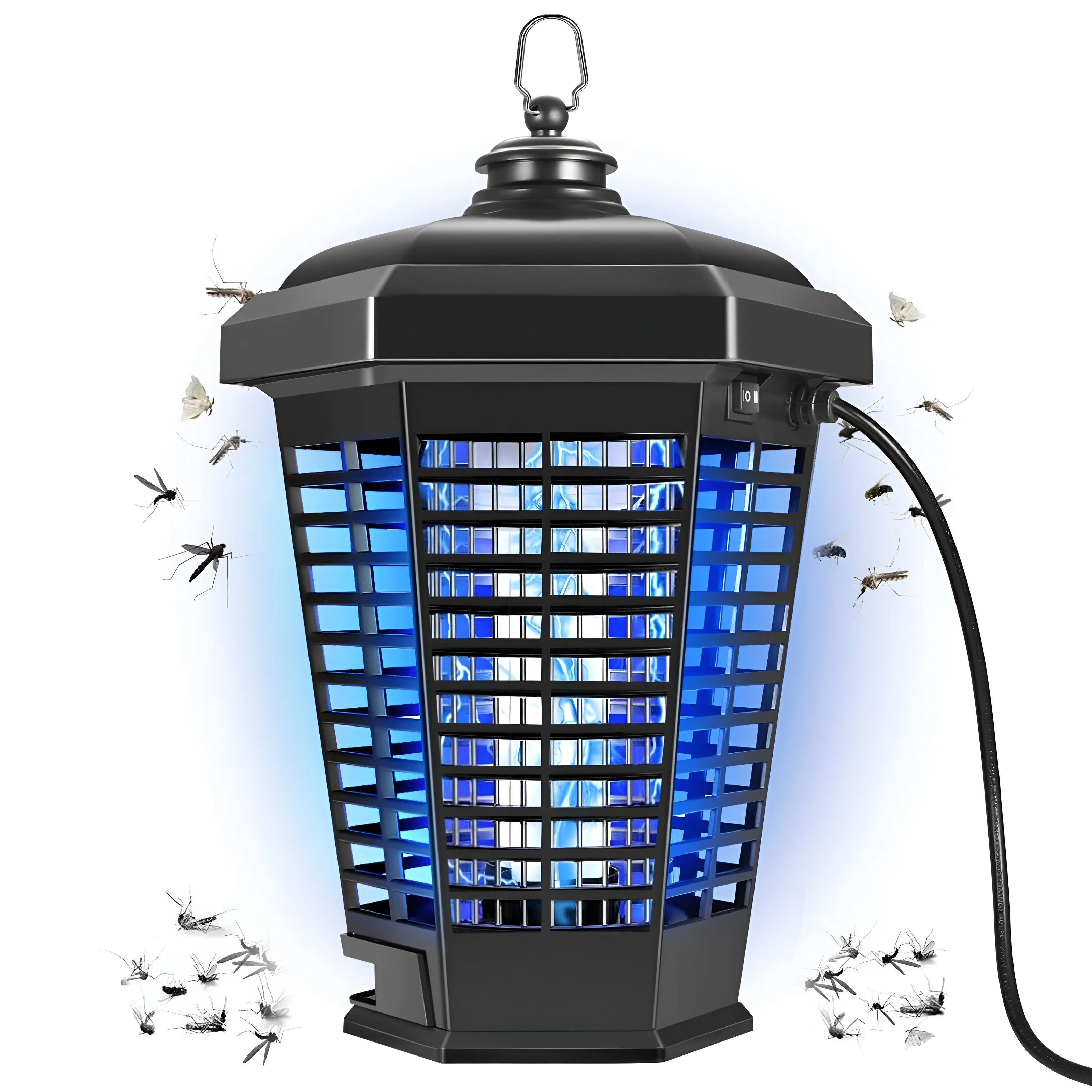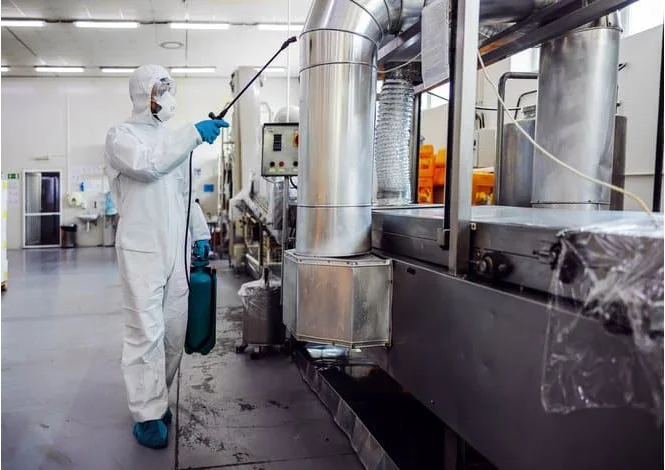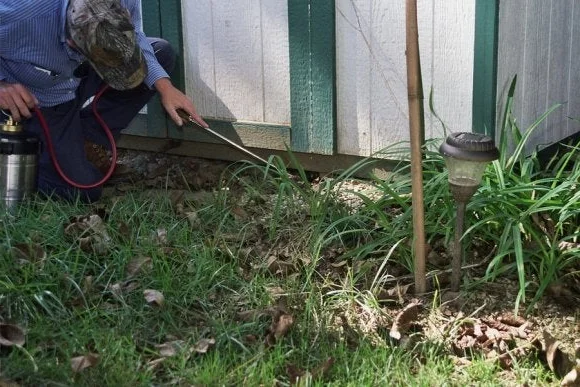Master-planned communities represent the pinnacle of modern residential living,
offering pristine landscapes, quality construction, and thoughtful amenities. However,
these carefully designed environments face unique pest challenges that require specialized
attention. From preserving property values to maintaining community standards, effective
planned community pest control ensures that residents can enjoy their investment
without unwelcome intrusions from insects, rodents, or other unwanted visitors.
Unlike traditional neighborhoods that developed organically over time, planned communities
often feature consistent construction methods, shared green spaces, and interconnected
infrastructure that can facilitate pest movement between properties. Professional
community-wide pest management addresses these challenges through coordinated
strategies that protect individual homes while maintaining the overall health and
appeal of the entire development. In this comprehensive guide, we'll explore how
HOA pest control services create lasting solutions for modern residential communities.
Ready to protect your community? Our specialized team offers
comprehensive community pest solutions
CUSTOMIZED for planned developments and
HOA management programs designed for long-term success.
Get your community assessment today!
Unique Pest Control Challenges in Planned Communities
Planned communities face distinct pest management challenges that set them apart
from traditional neighborhoods. Understanding these unique factors is crucial for
developing effective planned community pest control strategies:
-
Interconnected infrastructure Shared utilities, common walls, and connected
drainage systems can create pest highways between units. When one property has an
infestation, it can quickly spread to neighboring homes through these connections.
-
Consistent construction methods Similar building materials, techniques, and
timelines often mean that if one home has a structural vulnerability to pests,
many others in the community likely share the same weakness.
-
Landscaping uniformity While beautiful, standardized landscaping can create
ideal conditions for specific pests. Monoculture plantings may attract particular
insects, while irrigation systems can provide moisture that draws termites and other pests.
-
Community amenities Pools, fitness centers, clubhouses, and playgrounds
create additional pest attraction points and require specialized treatment approaches
to maintain both effectiveness and safety for residents.
-
HOA standards and restrictions Homeowners associations often have strict
guidelines about exterior modifications, chemical use, and maintenance practices
that can impact individual pest control efforts, making coordinated community
approaches more effective.
These interconnected challenges require a comprehensive approach that goes beyond
individual property treatments. Successful community-wide pest management
addresses these systemic issues while maintaining the aesthetic and lifestyle
standards that make planned communities so desirable.
Common Pests in Planned Communities
While pest pressures vary by region and season, certain pests are particularly
problematic in planned community environments. Understanding these common invaders
helps communities develop targeted prevention and treatment strategies:
Termites
Comprehensive termite inspection protecting community property values
Termites pose one of the greatest threats to planned communities, especially
those with consistent wood-frame construction. Subterranean termites can
travel between properties through underground tunnel systems, making
community-wide termite prevention programs essential. New construction
often disturbs existing termite colonies, and irrigation systems common in
planned communities provide the moisture these pests need to thrive.
Early detection through regular community termite inspections can
prevent costly damage and protect property values. Many HOAs now implement
annual inspection programs and coordinate treatment schedules to ensure
comprehensive protection across the entire development.
Mosquitoes
Professional mosquito control creating comfortable outdoor living spaces
Planned communities often feature extensive outdoor amenities like pools,
water features, and irrigation systems that can become mosquito breeding
grounds. Common areas such as parks, walking trails, and outdoor dining
spaces become unusable during peak mosquito season without proper control
measures. Community mosquito management programs address these
issues through systematic treatment of breeding sites and barrier protection.
Coordinated mosquito control is particularly effective in planned communities
because treatments can be synchronized across properties and common areas.
This comprehensive approach provides better protection than individual
property treatments alone, ensuring that residents can fully enjoy their
outdoor amenities throughout the mosquito season.
Rodents
Strategic rodent control protecting community homes and businesses
Rodents can quickly become established in planned communities, moving
between properties through landscaping, utility corridors, and shared
infrastructure. Mice and rats are attracted to the abundant food sources
found in residential areas, and the consistent construction methods in
planned communities often provide similar entry points across multiple
properties.
Community-wide rodent prevention strategies focus on eliminating
attractants, sealing common entry points, and establishing monitoring
systems that can detect problems early. Regular inspections of common
areas, dumpster locations, and utility areas help prevent rodent
populations from becoming established in the first place.
Ants
Ant colonies can quickly spread throughout planned communities, particularly
when landscape irrigation provides consistent moisture. Fire ants, carpenter
ants, and sugar ants each present different challenges, from painful stings
in common areas to structural damage in wooden features. The uniform
landscaping common in planned communities can create ideal conditions for
certain ant species to flourish.
Effective ant control in planned communities requires identifying and treating
colony locations while addressing the environmental conditions that support
ant populations. Integrated ant management programs coordinate treatments
across properties and common areas to prevent colonies from simply relocating
to nearby untreated areas.
Wasps and Hornets
Outdoor amenities like playgrounds, pools, and dining areas become hazardous
when wasps or hornets establish nests nearby. These aggressive insects are
attracted to food sources and can build nests in landscaping, building eaves,
and utility structures throughout the community. The proximity of homes in
planned communities means that a single nest can impact multiple families.
Professional wasp and hornet control ensures safe removal of existing nests
while implementing prevention strategies to discourage future nesting. Regular
monitoring of common areas during peak nesting season helps identify and
address problems before they become dangerous to residents and guests.
Sustainable Pest Management for Communities
Modern planned communities increasingly prioritize environmental
sustainability and resident health, making eco-friendly pest solutions
a natural fit for community pest management programs. Integrated Pest
Management (IPM) approaches minimize chemical usage while maintaining
effective pest control through prevention, monitoring, and targeted
treatments only when necessary.
Green pest control methods are particularly well-suited to planned
communities because they protect the health of children playing in common
areas, preserve beneficial insects that support community landscaping,
and maintain the environmental quality that residents value. These
approaches often prove more cost-effective long-term by addressing root
causes rather than just treating symptoms.
Community Sustainability Commitment
Our planned community pest management programs prioritize environmental
stewardship while delivering exceptional results, ensuring that your
community remains a healthy, sustainable place to live for generations to come.
Sustainable pest management in planned communities often includes habitat
modification, exclusion techniques, biological controls, and minimal-impact
treatments that target specific pest issues. Below is a comparison of different
sustainable approaches and their benefits for community environments:
| Sustainable Method |
Community Benefits |
Best Applications |
| Habitat Modification |
Reduces pest attractants naturally; enhances community aesthetics;
provides long-term prevention without ongoing treatments.
|
Landscape design changes, drainage improvements, and vegetation
management to eliminate pest harborage and breeding sites.
|
| Exclusion & Sealing |
Prevents pest entry without chemicals; protects property values;
reduces need for future treatments across the community.
|
Sealing common construction gaps, installing screens on community
buildings, and barrier installations in vulnerable areas.
|
| Biological Controls |
Protects beneficial insects; maintains ecosystem balance; safe
for children and pets using community amenities.
|
Beneficial nematodes for grub control, predatory insects for
aphid management, and biological larvicides for mosquito breeding sites.
|
| Targeted Low-Impact Treatments |
Minimizes chemical exposure; maintains community health standards;
effective for specific pest problems when other methods aren't sufficient.
|
Precision application to specific pest colonies, bait stations in
strategic locations, and spot treatments for acute infestations.
|
| Monitoring & Early Detection |
Prevents major infestations; reduces treatment costs; maintains
consistent pest control across all community areas.
|
Regular inspections of common areas, pheromone traps for monitoring,
and community-wide reporting systems for early problem identification.
|
The key to successful sustainable pest management is combining multiple
approaches in a coordinated strategy. This integrated approach often proves
more effective than any single method while supporting the environmental
and health goals that many planned communities value.
Comprehensive Community Pest Management Programs
HOA-Coordinated Services
HOA pest control services provide the coordination and consistency
that planned communities need for effective pest management. By working
directly with homeowners associations, pest control providers can develop
comprehensive strategies that address both individual property needs and
community-wide challenges. This coordination ensures that treatments are
scheduled effectively, residents are properly notified, and community
standards are maintained throughout the process.
HOA partnerships also enable bulk purchasing power that often reduces
costs for individual homeowners while ensuring consistent service quality
across the community. Professional pest control providers work with HOA
boards to develop policies, treatment schedules, and communication
protocols that keep residents informed and protected.
Common Area Management
Community amenities like pools, fitness centers, playgrounds, and clubhouses
require specialized pest management approaches that balance effectiveness with
safety for residents of all ages. Common area pest control involves
regular monitoring, preventive treatments, and rapid response to any pest
issues that could impact resident enjoyment of these valuable amenities.
Professional management of common areas includes treating landscaping that
could harbor pests, managing water features that might attract mosquitoes,
and ensuring that food service areas remain free of ants, flies, and rodents.
Regular inspections and maintenance help identify potential problems before
they affect residents or violate health codes.
Seasonal Programs
Planned communities benefit from year-round pest management programs
that adapt to seasonal pest pressures and community activities. Spring
programs focus on preventing termite swarms and establishing mosquito control
before peak breeding season. Summer services emphasize maintaining outdoor
comfort for community events and pool activities.
Fall preparation includes rodent exclusion before winter weather drives
pests indoors, while winter services focus on indoor pest prevention and
monitoring. This seasonal approach ensures that pest control efforts align
with both natural pest cycles and community usage patterns throughout the year.
Transform your community with professional planned community pest control
programs designed for lasting results. From HOA coordination to
sustainable management solutions, we have the expertise your community needs –
schedule your community consultation today!
Benefits of Professional Community Pest Management
Investing in professional community-wide pest management provides
significant advantages that extend far beyond individual pest control services.
These comprehensive programs protect property values, enhance quality of life,
and create healthier environments for all residents:
-
Property value protection Consistent pest control across the community
prevents infestations that could damage individual properties or detract from
the overall appeal of the development. Well-maintained pest management helps
preserve and enhance property values for all residents.
-
Cost efficiency through coordination Community-wide programs leverage
economies of scale, often providing better value than individual service
contracts. Bulk purchasing, coordinated scheduling, and shared resources
reduce costs while improving service consistency.
-
Enhanced quality of life Residents can fully enjoy outdoor amenities,
host gatherings, and use common areas without pest concerns. Professional
management ensures that community spaces remain comfortable and inviting
year-round.
-
Consistent service standards Professional providers establish uniform
service protocols that ensure all areas receive appropriate attention. This
consistency prevents pest problems from developing in overlooked areas that
could later impact the entire community.
-
Regulatory compliance Community pest management programs help ensure
compliance with local health codes, HOA requirements, and environmental
regulations. Professional providers stay current with changing requirements
and adjust programs accordingly.
Professional community pest management represents an investment in the long-term
success and desirability of planned communities. By addressing pest challenges
proactively and comprehensively, these programs help maintain the standards
and lifestyle that make planned communities attractive to residents and buyers.
Community Success Stories
Oakwood Preserve - Master-Planned Community
This 500-home development was experiencing widespread ant problems that were
affecting property sales and resident satisfaction. Our comprehensive
community ant management program eliminated the infestations within
60 days and established ongoing prevention protocols that have maintained
ant-free conditions for over two years.
Riverside Commons - Active Adult Community
Mosquito problems were preventing residents from using the community's
extensive outdoor amenities. Our integrated mosquito management program
reduced mosquito populations by 95% and allowed the community to resume
outdoor activities and events throughout the summer season.
Heritage Hills - Luxury Planned Development
A coordinated approach to termite prevention across 300 homes prevented
potential damage estimated at over $2 million. Our community termite
protection program includes annual inspections and coordinated treatments
that have maintained zero termite damage for three consecutive years.
Seasonal Pest Management Calendar for Communities
Spring (March-May)
- Termite swarm prevention
- Mosquito breeding site elimination
- Ant colony identification and treatment
- Common area landscape inspection
Priority: Establish preventive barriers and address
winter damage before pest populations expand.
Summer (June-August)
- Active mosquito control programs
- Wasp and hornet nest management
- Pool and water feature treatments
- Common area event preparation
Priority: Maintain outdoor comfort for peak community
activity season and special events.
Fall (September-November)
- Rodent exclusion preparation
- Spider management programs
- Overwintering pest prevention
- Community building weatherization
Priority: Prepare community infrastructure for winter
and prevent pest entry into heated spaces.
Winter (December-February)
- Indoor pest monitoring
- Community building inspections
- Planning for spring prevention
- Resident education programs
Priority: Monitor indoor spaces and plan comprehensive
strategies for the upcoming pest season.
What Community Managers Say
"PestControl100's community-wide approach saved us thousands compared to
individual treatments. Our residents love that they can enjoy the pool
and outdoor spaces without mosquito problems, and our property values
have remained strong."
- Jennifer M., HOA President, Sunset Ridge Community
★★★★★
"The coordinated termite prevention program gives our board and residents
peace of mind. The annual inspections and treatments are well-organized,
and communication with homeowners is excellent. No termite damage in
three years speaks for itself."
- David R., Community Manager, Willowbrook Estates
★★★★★
"Working with PestControl100 transformed our community's pest management
from a constant headache to a seamless process. They handle everything
from resident communication to HOA reporting, and the results have been
outstanding."
- Maria S., Property Management Director, Clearwater Commons
★★★★★
Frequently Asked Questions
How does community-wide pest control differ from individual home services?
Community-wide pest control addresses the interconnected nature of planned
developments by treating common areas, coordinating timing across properties,
and addressing pest corridors that individual treatments might miss. This
comprehensive approach prevents pests from simply moving between properties
and provides more effective long-term control.
What role does the HOA play in community pest management programs?
HOAs coordinate scheduling, communicate with residents, manage contracts,
and ensure compliance with community standards. They work with pest control
providers to develop policies, oversee common area treatments, and often
negotiate group rates that provide cost savings for individual homeowners
who choose to participate.
Are eco-friendly pest control methods effective for large communities?
Yes, eco-friendly methods are often more effective in large communities
because they can be applied consistently across extensive areas. Integrated
Pest Management approaches work particularly well in planned communities
where coordination allows for habitat modification, exclusion techniques,
and biological controls to be implemented comprehensively throughout the
development.
How are residents notified about community pest control treatments?
Professional pest control providers work with HOAs to establish
communication protocols that may include advance notices via email,
community websites, posted signs, and door hangers. Residents receive
information about treatment dates, affected areas, any precautions needed,
and reentry times to ensure safety and minimize disruption.
Planned Communities We Serve
Our specialized community pest management services are available to planned
developments, master-planned communities, and HOA-managed properties throughout
the United States. We work with communities of all sizes and types:
Master-Planned Communities
Large-scale developments with hundreds or thousands of homes benefit from
our comprehensive pest management programs that address the unique challenges
of coordinating services across extensive properties while maintaining
consistent standards and cost efficiency.
Active Adult Communities
Age-restricted communities require pest control solutions that prioritize
health-conscious approaches and maintain outdoor amenities that are central
to the active lifestyle. Our programs focus on eco-friendly methods and
preserving comfort in common areas.
Luxury Developments
High-end communities demand the highest service standards and discretion.
Our luxury community programs provide white-glove service with advanced
treatment methods that protect property values and maintain the prestigious
environment residents expect.
Specialized Community Services
Emergency Response Programs
Rapid response team addressing urgent pest issues in community settings
Planned communities need immediate response capabilities for pest
emergencies that could impact resident safety or community events.
Our emergency pest response programs provide rapid deployment
for issues like wasp swarms near playgrounds, sudden rodent
infestations in community buildings, or pest problems that threaten
scheduled community activities.
Emergency services include 24/7 availability for critical situations,
expedited treatment protocols that minimize disruption, and immediate
communication with HOA management to coordinate response efforts and
keep residents informed about any necessary precautions.
Construction Phase Pest Prevention
New planned communities and expansion phases require specialized pest
prevention during construction to prevent infestations before residents
move in. Pre-construction pest planning includes soil treatments
for termite prevention, construction site monitoring, and coordination
with builders to implement pest-resistant design features.
Our construction-phase services help ensure that new communities start
with comprehensive pest protection rather than having to address problems
after residents have moved in. This proactive approach often proves more
cost-effective and prevents the disruption of treating occupied homes.
Community Education Programs
Educated residents are partners in effective pest management. Our
community education initiatives include resident workshops,
seasonal pest prevention tips, and communication programs that help
homeowners understand their role in community-wide pest management efforts.
Educational programs cover topics like landscape maintenance practices
that discourage pests, early warning signs residents should report,
and coordination with community-wide treatment schedules. Well-informed
residents contribute significantly to the success of comprehensive
pest management programs.
Advanced Technology for Community Pest Management
Modern planned communities benefit from advanced pest management
technologies that provide more effective monitoring, treatment, and
prevention capabilities. Smart monitoring systems can detect
pest activity in common areas before infestations become visible,
allowing for early intervention that prevents larger problems.
Digital reporting systems keep HOA managers and residents informed
about service activities, treatment schedules, and pest monitoring
results. These technological solutions provide transparency and
documentation that support effective community management and
resident communication.
-
Remote monitoring stations Automated monitoring devices in
common areas provide 24/7 surveillance for rodent activity, insect
populations, and environmental conditions that could attract pests.
-
Digital service documentation Comprehensive records of all
treatments, inspections, and recommendations provide HOAs with detailed
documentation for maintenance planning and resident communication.
-
Weather-integrated scheduling Treatment schedules automatically
adjust based on weather conditions to ensure optimal effectiveness
while minimizing disruption to community activities.
-
Resident communication platforms Automated notification systems
keep residents informed about upcoming treatments, precautions needed,
and service results through multiple communication channels.
Investment and Value Protection
Professional community pest management represents a strategic investment
that provides significant returns through property value protection,
reduced individual treatment costs, and enhanced community desirability.
The coordinated approach typically costs less than individual services
while providing superior results.
| Investment Factor |
Community Program Benefits |
Individual Treatment Comparison |
| Cost Per Unit |
20-40% savings through bulk purchasing and coordinated scheduling;
shared costs for common area treatments.
|
Higher individual service costs; no shared cost benefits for
common areas that affect all residents.
|
| Effectiveness |
Comprehensive coverage prevents pest movement between properties;
coordinated timing maximizes treatment effectiveness.
|
Individual treatments may miss pest corridors; uncoordinated
timing can reduce overall effectiveness.
|
| Property Values |
Consistent pest control across community maintains and enhances
property values; prevents pest-related property damage.
|
Inconsistent protection may allow pest problems that impact
community appeal and individual property values.
|
| Administrative Efficiency |
Single vendor relationship; coordinated scheduling; simplified
communication and billing through HOA management.
|
Multiple vendor relationships; complex scheduling coordination;
individual resident management of services and communication.
|
ROI Calculation
Most planned communities see a return on their pest management investment
within the first year through reduced individual treatment costs,
prevented property damage, and enhanced community appeal that supports
property values and reduces turnover.
Program Implementation Process
Establishing a comprehensive community pest management program involves
careful planning, coordination, and phased implementation to ensure
success while minimizing disruption to residents. Our systematic
approach ensures smooth program launch and ongoing effectiveness.
Phase 1: Community Assessment
Comprehensive evaluation of the community includes property inspections,
pest pressure assessment, identification of risk factors, and analysis
of current pest management practices. This assessment forms the foundation
for developing a customized program that addresses specific community needs.
Phase 2: Program Design
Based on assessment results, we develop a detailed program proposal that
includes treatment protocols, scheduling recommendations, cost analysis,
and communication plans. The proposal addresses both immediate pest
concerns and long-term prevention strategies tailored to the community's
specific situation.
Phase 3: HOA Coordination
Working with HOA boards and management companies, we establish service
agreements, communication protocols, and resident notification procedures.
This phase includes developing policies that support the program and
ensure compliance with community standards and regulations.
Phase 4: Program Launch
Systematic implementation begins with initial treatments, resident
education, and establishment of monitoring protocols. Launch activities
are carefully scheduled to minimize disruption while quickly establishing
protective barriers against pest intrusion.
Phase 5: Ongoing Management
Regular service delivery, monitoring, reporting, and program adjustments
ensure continued effectiveness. Ongoing management includes seasonal
adaptations, addressing emerging pest issues, and continuous improvement
based on monitoring results and community feedback.
Ready to transform your community's pest management? Our specialized
planned community pest control programs provide the comprehensive
protection your development deserves. From initial assessment to ongoing
management, we're your partner in maintaining a pest-free community –
contact us today to get started!
Nationwide Community Service Coverage
Serving planned communities and master developments across the United States







